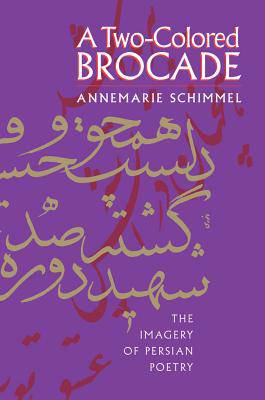
- Afhalen na 1 uur in een winkel met voorraad
- Gratis thuislevering in België vanaf € 30
- Ruim aanbod met 7 miljoen producten
- Afhalen na 1 uur in een winkel met voorraad
- Gratis thuislevering in België vanaf € 30
- Ruim aanbod met 7 miljoen producten
Omschrijving
Annemarie Schimmel, one of the world's foremost authorities on Persian literature, provides a comprehensive introduction to the complicated and highly sophisticated system of rhetoric and imagery used by the poets of Iran, Ottoman Turkey, and Muslim India. She shows that these images have been used and refined over the centuries and reflect the changing conditions in the Muslim world.
According to Schimmel, Persian poetry does not aim to be spontaneous in spirit or highly personal in form. Instead it is rooted in conventions and rules of prosody, rhymes, and verbal instrumentation. Ideally, every verse should be like a precious stone -- perfectly formed and multifaceted -- and convey the dynamic relationship between everyday reality and the transcendental.
Persian poetry, Schimmel explains, is more similar to medieval European verse than Western poetry as it has been written since the Romantic period. The characteristic verse form is the ghazal -- a set of rhyming couplets -- which serves as a vehicle for shrouding in conventional tropes the poet's real intentions.
Because Persian poetry is neither narrative nor dramatic in its overall form, its strength lies in an "architectonic" design; each precisely expressed image is carefully fitted into a pattern of linked figures of speech. Schimmel shows that at its heart Persian poetry transforms the world into a web of symbols embedded in Islamic culture.
Specificaties
Betrokkenen
- Auteur(s):
- Uitgeverij:
Inhoud
- Aantal bladzijden:
- 558
- Taal:
- Engels
Eigenschappen
- Productcode (EAN):
- 9780807856208
- Verschijningsdatum:
- 1/12/2004
- Uitvoering:
- Paperback
- Formaat:
- Trade paperback (VS)
- Afmetingen:
- 155 mm x 231 mm
- Gewicht:
- 861 g

Alleen bij Standaard Boekhandel
Beoordelingen
We publiceren alleen reviews die voldoen aan de voorwaarden voor reviews. Bekijk onze voorwaarden voor reviews.








